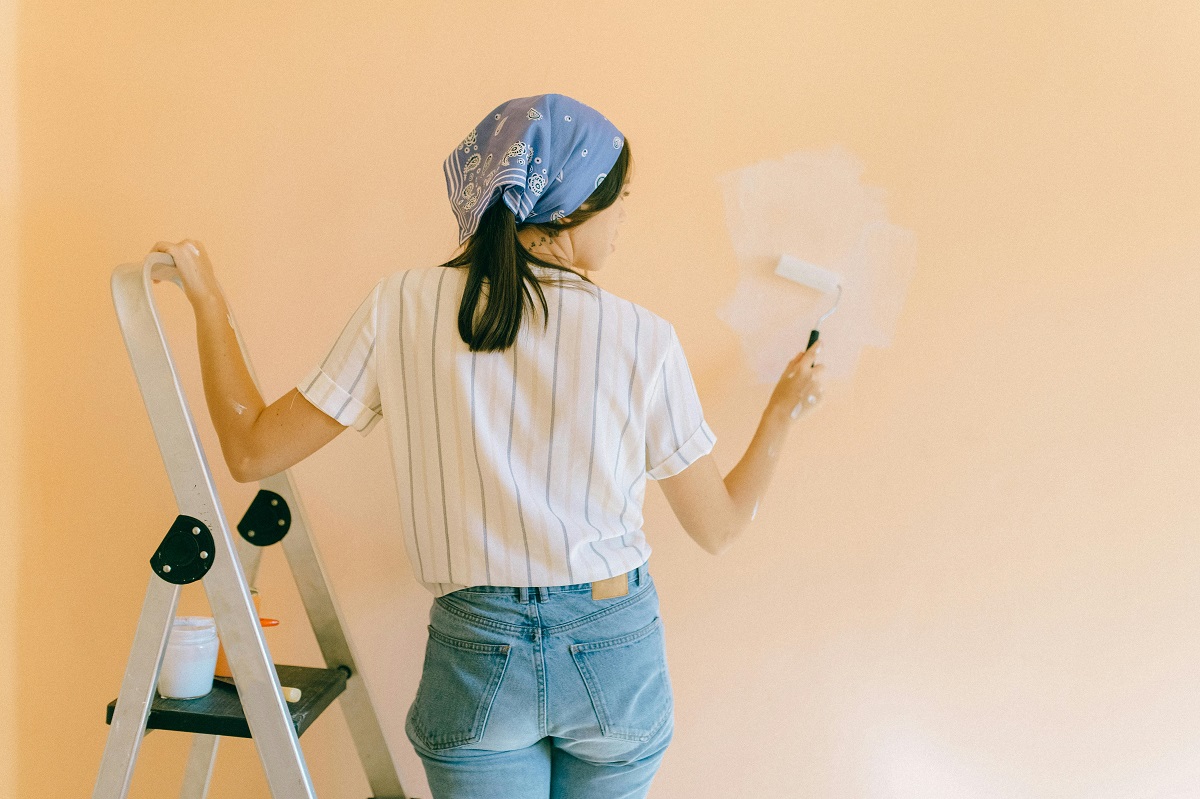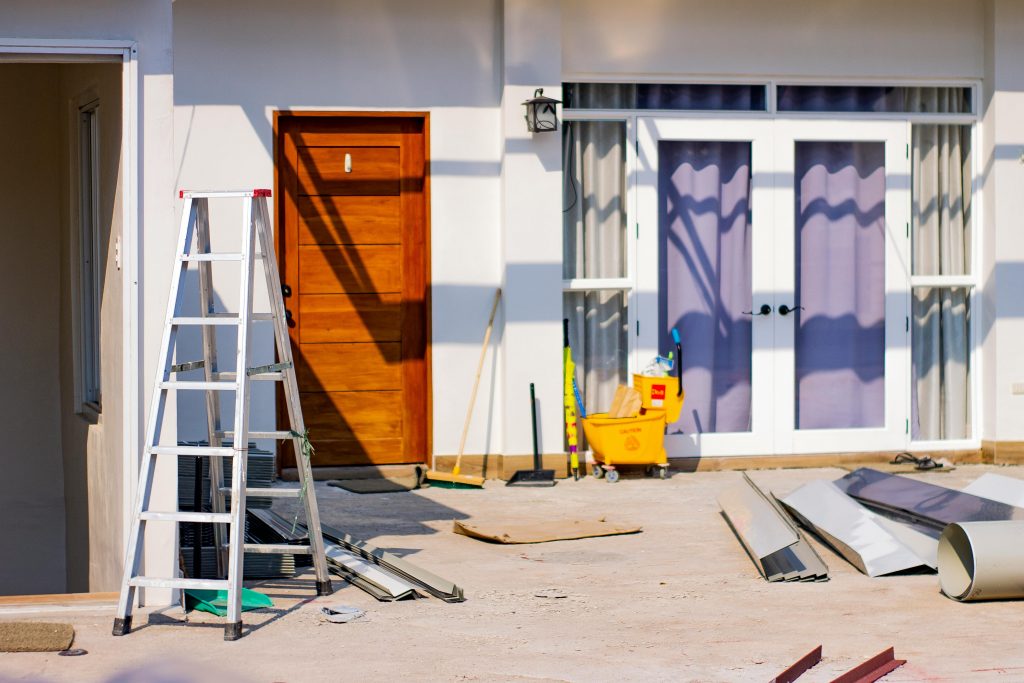
If you’re a homeowner planning to refresh your home’s curb appeal, few projects offer as much impact as a fresh coat of exterior paint. But one of the most common questions homeowners ask is: How much does it cost to paint a house exterior in 2025?
In this guide, we’ll break down average costs, explain what affects pricing, and help you budget based on house size, material type, and whether you hire a professional or go the DIY route.
Why Exterior Painting Matters
Before diving into the numbers, let’s talk about why painting your home exterior is such a valuable investment:
- Improves curb appeal: A fresh coat of paint makes your home look new, clean, and well-maintained. This is especially important if you plan to sell your home in the near future.
- Protects your home: Exterior paint acts as a barrier against the elements, preventing moisture damage, mold growth, and UV-related deterioration.
- Extends material lifespan: Regularly painted surfaces last longer and require fewer costly repairs over time.
- Adds value: Homes with recently painted exteriors often command higher prices on the market.
For most homeowners, an exterior paint project isn’t just cosmetic—it’s part of maintaining the integrity and value of the home.
How Much to Paint House Exterior in 2025

In 2025, the national average cost to paint a house exterior ranges between:
- $2,700 – $7,500 for a professional paint job
- $800 – $2,500 for DIY (materials only)
These costs represent a broad range influenced by various factors. Let’s explore these factors in more detail to help you better understand where your home might fall on the pricing spectrum.
Key Factors That Affect Cost:
- Size of the home (square footage): The larger the home, the more surface area there is to paint, and the more materials and labor hours are required.
- Type of siding material: Some materials absorb more paint, require special primers, or need more intensive prep work.
- Number of stories: Multi-story homes require scaffolding or extension ladders, which increases labor time and cost.
- Condition of existing paint or siding: Peeling paint or damaged surfaces need to be repaired or primed, adding to overall expenses.
- Paint quality and type: Premium paints last longer and resist weather better but cost significantly more per gallon.
- Local labor rates: Prices can vary significantly based on regional cost of living and local demand for painters.
Cost Breakdown by Home Size
1. Small Homes (1,000–1,500 sq ft)
- Professional painting: $2,700 – $4,000
- DIY cost: $800 – $1,200
Smaller homes typically require less labor and fewer materials, making them more affordable to paint. These are often single-story homes with simpler architecture and fewer decorative features. DIY is a viable option for many homeowners in this range, especially if the siding is in good condition.
2. Medium Homes (1,500–2,500 sq ft)
- Professional painting: $4,000 – $6,500
- DIY cost: $1,000 – $1,800
Medium-sized homes are more complex, often with multiple stories, trim work, and accent features. You may need additional tools like scaffolding or ladders. While DIY is still possible, many homeowners opt for professionals to ensure efficiency and safety.
3. Large Homes (2,500–4,000+ sq ft)
- Professional painting: $6,500 – $10,000+
- DIY cost: $1,800 – $2,500+
Large homes come with higher material and labor costs. They often feature complex architecture, large surface areas, and detailed trim that require more attention. Most homeowners in this category hire professionals to avoid the physical demands and time investment.
How Siding Material Affects Painting Costs
Different siding materials react differently to paint, both in terms of preparation and paint absorption. Some require special treatment or more coats, which adds to the cost.
| Siding Type | Cost per Sq Ft (Professional) | Key Considerations |
| Wood | $1.50 – $3.50 | May need scraping, sanding, and primer. Susceptible to moisture damage. |
| Stucco | $1.80 – $4.00 | May require patching; absorbs more paint. Usually sprayed for best results. |
| Brick (Unpainted) | $2.00 – $4.50 | Requires masonry primer; difficult to cover; high labor time. |
| Aluminum | $1.00 – $2.50 | Needs special bonding primer. May show brush marks easily. |
| Vinyl | $1.00 – $2.50 | Must use vinyl-safe paint. Dark colors can warp siding. |
| Fiber Cement | $1.50 – $3.50 | Durable but needs careful preparation and may absorb a lot of paint. |
The more labor-intensive the material, the higher your overall cost will be.
How Weather and Climate Impact Exterior Painting Costs
Weather conditions play a critical role not only in determining the best time to paint but also in influencing the overall cost of the project. Regions with harsh or unpredictable climates may require more frequent repainting or special types of paint, which can increase expenses.
Regional Cost Variations:
- Humid climates (like the Southeast) may require mold-resistant paint and longer drying times, affecting labor costs.
- Coastal areas need high-quality paints that can withstand salt air and moisture, often at a premium price.
- Hot, sunny regions cause paint to fade faster, especially dark colors, so UV-resistant coatings may be necessary.
- Cold climates often have shorter painting seasons, leading to higher demand for painters during the spring and summer months, which can drive up labor costs.
Seasonal Timing Considerations:
- In most regions, spring and early fall are ideal for exterior painting due to mild temperatures and low humidity.
- Peak season demand (late spring to early summer) may result in higher contractor rates.
- Off-season deals may be available during cooler months, but weather risks like rain or frost may delay the project.
By planning around your region’s climate and the seasonal painting calendar, you can potentially save money and improve the longevity of your paint job.
What’s Included in a Professional Paint Quote?
Understanding what’s covered in a painting quote helps you compare estimates and avoid hidden fees.
Typically Included:
- Surface pressure washing
- Caulking and minor repairs
- Scraping and sanding where needed
- Priming bare surfaces
- Two coats of exterior paint
- Painting of siding, trim, and accents (if specified)
- Cleanup and waste disposal
Often Not Included:
- Repairing significant wood rot or water damage
- Replacing damaged siding or trim
- Painting decks, fences, or detached structures
- Using multiple color schemes or high-end specialty coatings
- Permit costs in HOA or historic districts
Always request a detailed, itemized estimate before hiring a contractor.
How Long Does It Take to Paint a House Exterior?

Project duration depends on your home’s size, the number of stories, and the amount of prep required. Here’s a general guide:
- Small home: 3–5 days
- Medium home: 5–7 days
- Large home: 7–10+ days
Weather also plays a role. Rain or high humidity can delay drying and extend the timeline. Professionals can usually complete the work faster and more efficiently than DIYers.
DIY vs. Hiring a Pro: Which Is Better?
There are pros and cons to both approaches. Here’s how they compare:
| Factor | DIY | Professional |
| Cost | Lower upfront | Higher, but often better long-term value |
| Skill Required | High; must prep and paint correctly | Minimal for homeowner |
| Time Investment | 2–3 weekends or more | 3–10 days, depending on home size |
| Tools & Equipment | Must rent or buy | Provided by contractor |
| Risk of Mistakes | Higher (peeling, poor finish) | Low (if hiring a reputable pro) |
| Finish Quality | Varies | Usually smoother and more durable |
For small homes or experienced DIYers, self-painting can save money. For larger or multi-story homes, hiring professionals is often the safer, more efficient route.
How to Choose the Right Paint
Exterior paint must withstand rain, sunlight, wind, and temperature changes. Choosing the right formula is key.
What to Look For:
- Acrylic latex paint: Offers excellent durability and weather resistance
- Satin or semi-gloss finishes: Great for trim; easier to clean
- Flat or eggshell finishes: Ideal for siding; hides surface imperfections
- UV and mildew resistance: Essential for humid or sunny climates
- Elastomeric coatings: Optional for surfaces with hairline cracks
Recommended Brands:
- Sherwin-Williams Duration or SuperPaint
- Behr Premium Plus Ultra or Marquee
- Benjamin Moore Aura or Regal Select
- Valspar Reserve
Expect to pay $35–$85 per gallon. Most homes require 10–20 gallons, depending on size and number of coats.
How Often Should You Repaint Your House Exterior?
Paint longevity depends on both the quality of the paint and the type of siding.
| Siding Type | Repaint Every… |
| Wood | 5–7 years |
| Stucco | 6–10 years |
| Aluminum | 5–10 years |
| Vinyl | 7–10 years (if painted) |
| Fiber Cement | 10–15 years |
Environmental factors like humidity, sun exposure, and salt air (in coastal regions) may shorten these timelines.
Tips to Save on Exterior Painting Costs
Painting a home doesn’t have to break your budget. Here are smart ways to cut costs:
- Prep the surface yourself: Power wash and scrape old paint to reduce labor charges
- Stick to one or two colors: Simpler jobs require less time and precision
- Avoid peak seasons: Late fall or early spring may offer off-season discounts
- Compare multiple estimates: Get at least 3 quotes for fair pricing
- Buy paint in bulk: Contractors often get discounts, but even DIYers can save by purchasing larger quantities
- Maintain regularly: Tackle small touch-ups before damage requires full repainting
What Questions Should You Ask a Painting Contractor?
Hiring a painter is a big decision. Ask these questions to ensure you hire the right pro:
- Are you licensed and insured?
- Do you offer a warranty on your work?
- What brand and type of paint will you use?
- Is surface prep included?
- How many coats are included in the quote?
- Will you handle trim, doors, and shutters?
- How long will the project take?
- Do you have references or a portfolio of past work?
Clear communication and a written contract are essential to avoid surprises.
In Summary
Exterior painting remains one of the best investments homeowners can make to improve curb appeal, protect their home from the elements, and extend the life of siding materials. In 2025, the average cost to paint a house exterior ranges from $2,700 to $10,000 or more depending on your home’s size, siding material, condition, and whether you choose to DIY or hire a professional. Understanding these cost factors helps you plan a realistic budget and decide which route is best for your situation. Whether you tackle the project yourself or bring in the pros, a fresh coat of paint can dramatically enhance your home’s appearance and value for years to come.
